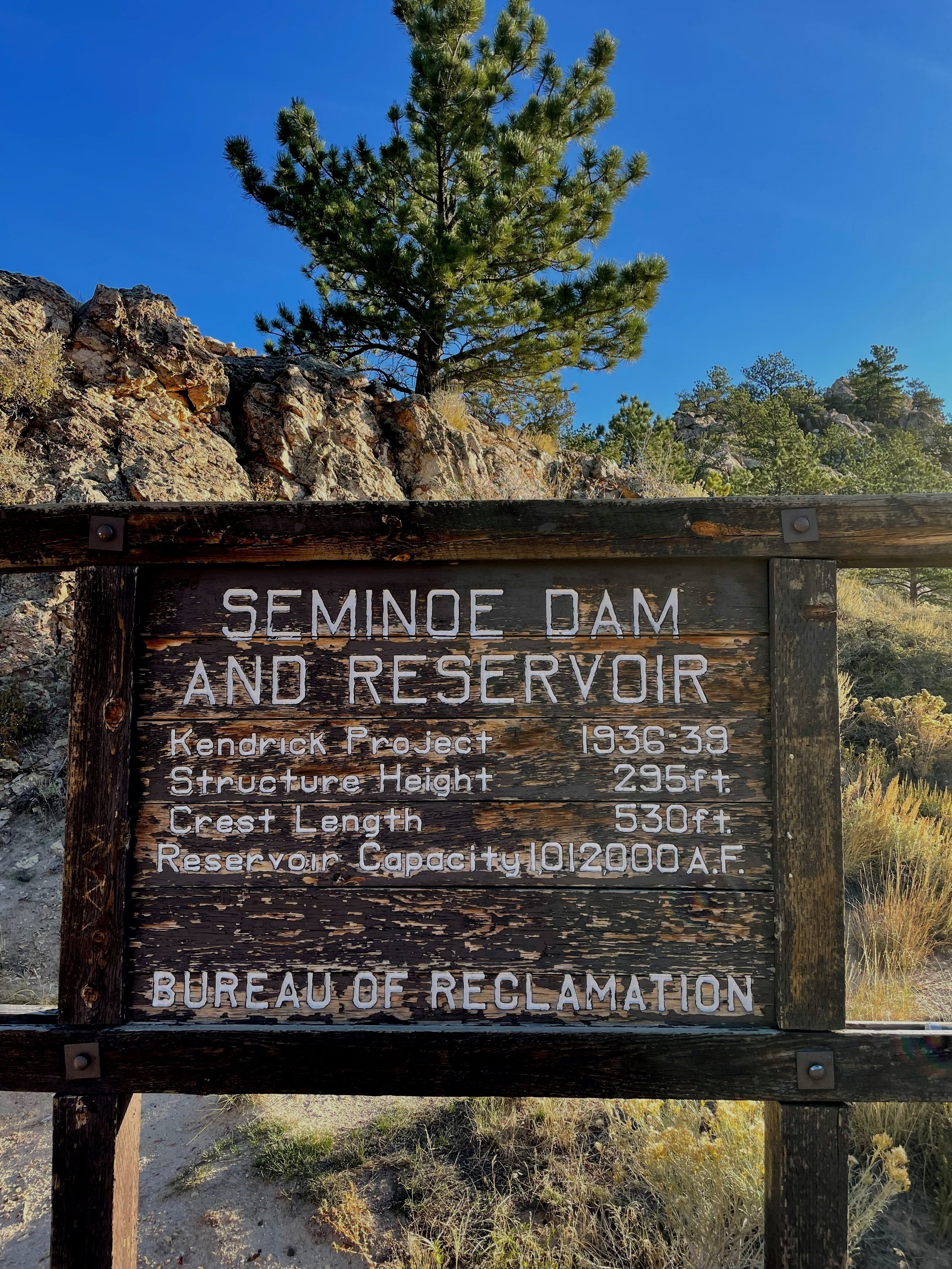The Modern Energy Hub for Wyoming Wind Energy.
Project Details
Seminoe Pumped Storage is a proposed reservoir-based energy storage project that would be located thirty-five miles northeast of Rawlins, in Carbon County, Wyoming. The project involves construction of one above-ground reservoir and an approximately 30-mile transmission line.
The lower reservoir for the project will be the existing Seminoe Reservoir, with approximately 1,000,000 ac-ft of water storage capacity. The upper reservoir will be located in the Bennet Mountains approximately 1.9 miles east of the Seminoe Dam (shown at right), and approximately 1,000 ft higher in elevation than the Seminoe Reservoir. The two reservoirs will be joined by tunnels underground. An underground powerhouse will contain equipment to generate electricity from the power of the water as it flows from the upper reservoir through the powerhouse and on to the lower reservoir. The same equipment would be used to pump water from the lower reservoir back to the upper reservoir, enabling the system to start the cycle again when needed.
Seminoe Pumped Storage has a planned generating capacity of 900 megawatts (MW), which is approximately the same capacity as the Dave Johnston coal plant and the Naughton coal plant. When starting with a full upper reservoir, the plant would be capable of providing full power output for twelve hours before needing to be re-charged. The water requirement for providing this level of power output and storage duration is a one-time fill of approximately 10,000 acre-feet, supplemented periodically to replenish evaporation loss.
Cross Section of the Power Facilities
REQUIREMENTS FOR PUMPED STORAGE
While pumped storage is an attractive option for utilities, it can’t be built anywhere. Good pumped storage sites require a rare combination of factors, including:
a large vertical drop over a short distance (for example, the 1,000+ feet available at the Seminoe Pumped Storage site)
topography (landforms) that are amenable to building reservoirs of sufficient size with less required earth-moving and dam heights
a nearby source of water for initial fill and evaporation make-up
a useful location on the electric transmission system and a transmission line or substation large enough to tie into
moderate environmental sensitivity and moderate potential for land use conflicts
geology that supports engineering and long-term operation of underground facilities and reservoirs
The proposed site for Seminoe Pumped Storage meets all of these requirements, and has the additional advantage of an existing reservoir meaning that only one new reservoir needs to be built.
Pumped Storage in the U.S.
There are currently 42 pumped storage plants operating in the US. Nearly all of these earlier plants were built in order to shift energy produced by nuclear or coal power plants in the middle of the night to day-time use, when it could replace expensive oil-based generation. Today, utilities are interested in using pumped storage for a different mission: to help ensure a reliable power supply while integrating variable energy sources like solar and wind. Variable renewable energy sources are important because they are carbon-free, but they are often not available when needed. Pumped storage helps to address this fundamental challenge of electrical energy by helping to store excess energy and release it at programmed times, thereby matching when it is generated with when it is needed.
Pumped storage can further provide all of the grid reliability services currently provided by fossil fuel-fired power plants, also known as ancillary services. Ancillary services are critical to maintaining a reliable, safe and affordable electricity grid. For these reasons, projects like White Pine are the best available bulk energy storage technology for managing the integration of renewable energy.




